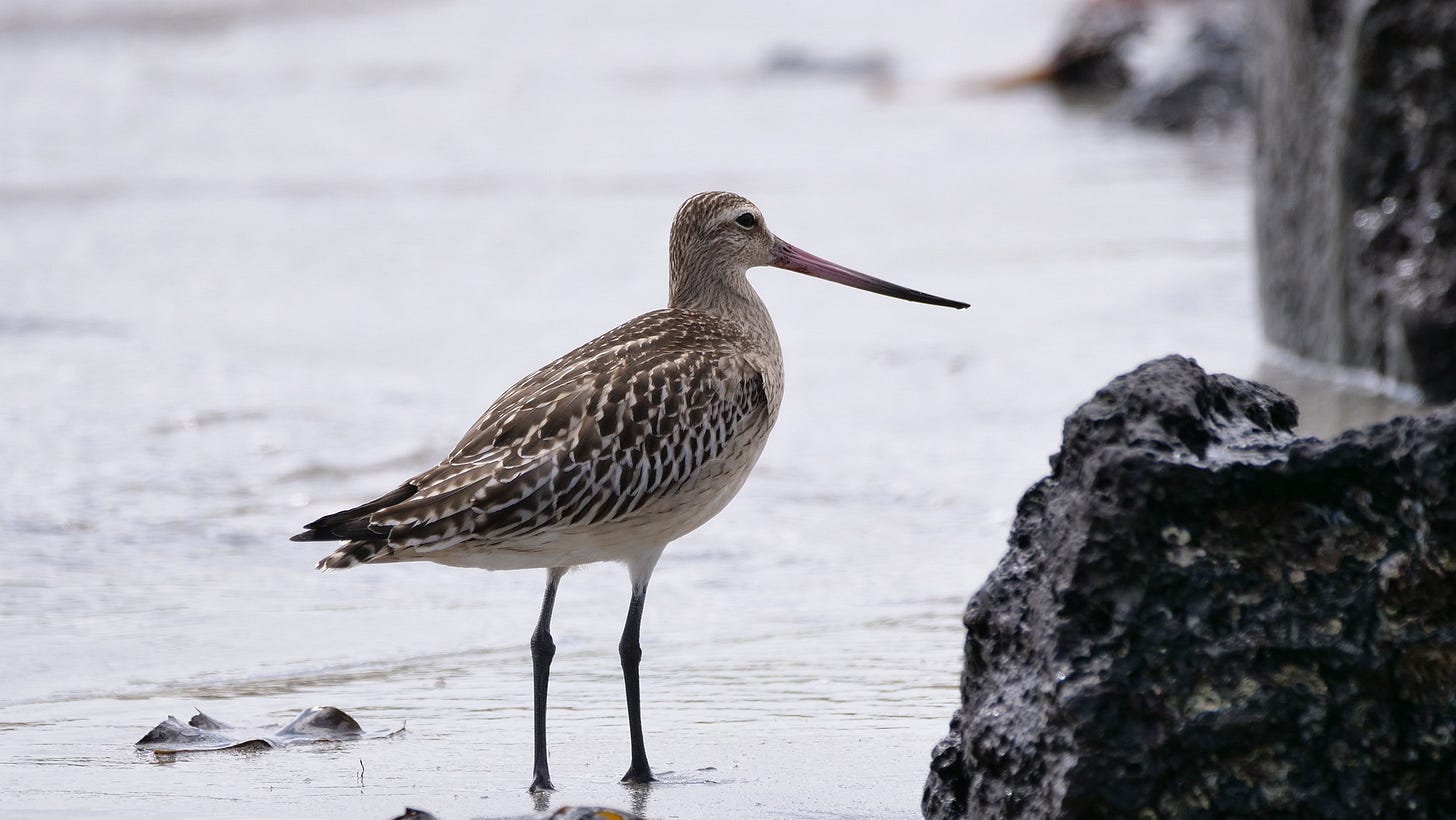Long term tryst with the wetlands – not just any old fly in fly out affair.
Salty Wave Story #14
The wetlands are home to all kinds of wildlife, like birds, fish, reptiles, crustaceans, mammals and marsupials. Many are endemic to Australia and familiar faces all year round. The Bar-tailed Godwit flies back and forth between its breeding grounds in Alaska, China or Siberia and summer retreat in Australian and New Zealand wetlands. Avoiding a cold winter is part of their natural agenda, an inner radar guides their yearly migration, an ability that helps the birds gauge how and when to navigate their course.
Image by Docujeju
Bar-tailed Godwits travel the longest distance of any migratory bird, flying a total return trip distance of over 29,000 km. This physical feat of endurance is also the longest journey tackled by any animal without a break to rest or feed.
The birds prepare for the flight by reducing the size of some organs (like the kidneys and liver which are not needed during the flight) to lighten their body weight; maximising the strength of their wing muscles to support continuous flapping movements; and increasing their fat stores by 60 to 70 per cent. The birds body is aerodynamically shaped and its physical adaptations enhance its ability to fly 90 km/hour.
If you’re visiting the wetlands, you can identify these birds by their call or spot them wading around the sand flats at low tide. Godwits have blue grey legs, with white feathers on their underside, and grey brown coloured feathers, marked by dark feathered centres, creating a stripe pattern. These birds are large, with a long tapering beak upturned at the end, a beak well adapted to catching insects and sifting through the sediments for bristle worms and mollusks.
The birds arrive at their destination in Alaska or Siberia to breed, after a non stop flight covering 10,000 to 13,000 km. The plumage of male birds changes markedly when they are breeding, its feathers located on the neck, breast and belly assume a red brick colour, and are dark brown on top. The female plumage appears dull by contrast, with chestnut to cinnamon tones. After mating, females lay a clutch of 3 to 4 eggs in a small nest made of moss and within four weeks the chicks have hatched and are developed enough to look after themselves and find food.
The parent birds depart on their epic migration back to Australia or New Zealand shores, leaving their precocious chicks to follow them on the wing a few weeks later. Scientists are still investigating how the chicks know where to fly, and for so long, without guidance by their parents. This event happens every year, and given the impacts the birds might encounter, both natural and man made, it’s incredible to think the birds’ survival rate is around 90 percent.
You have to admire the Bar-tailed Godwit, a bird that braves a marathon, just to be in the wetlands.
References
Wikipedia. Bar-tailed Godwit. https://en.m.wikipedia.org/wiki/Bar-tailed_godwit
Heartland Journeys. Bar-tailed Godwit. https://heartlandjourneys.com.au/about-us/ancient-wonderland/bar-tailed-godwits/#:~:text=During%20the%20months%20prior%20to,not%20needed%20during%20the%20flight.
Robbin’s, J. (2022). The Godwit’s Long, Long Nonstop Journey. https://www.nytimes.com/2022/09/20/science/migratory-birds-godwits.html?ref=oembedis




